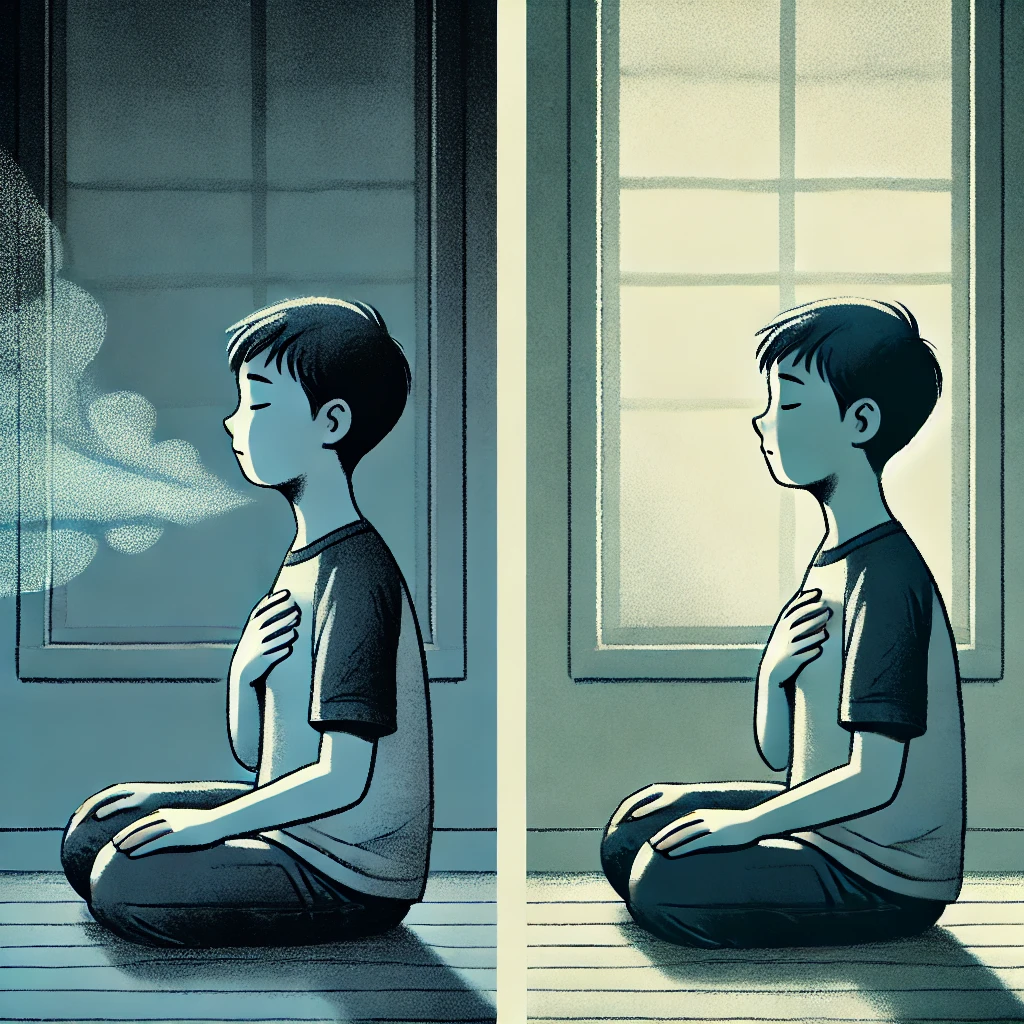When emotions feel overwhelming, it can seem like you’re losing control. But there’s a way to pause, step back, and regain your calm—and it all starts by simply recognizing what you’re feeling.
Emotions like fear, sadness, anxiety, or stress can make us feel powerless. But with the RAIN technique, you’ll discover a gentle, mindful way to explore and soothe these feelings. Ready to move from chaos to calm? Let’s dive into how this simple practice works and why it’s so effective for your emotional well-being.
What is the RAIN Technique?
The RAIN technique was developed by mindfulness teachers, including Tara Brach, to help people approach difficult emotions with mindful awareness. It stands for:
- Recognize: Acknowledge the emotion you are experiencing.
- Allow: Let the emotion be there without trying to push it away.
- Investigate: Explore the emotion with curiosity, not judgment.
- Nurture: Comfort yourself with kindness and compassion.
The RAIN technique is a simple yet powerful tool that helps you step back from overwhelming emotions. Instead of getting swept away by them, RAIN allows you to see your feelings clearly. With this method, you can respond to your emotions with curiosity and kindness instead of impulsively.
Step-by-Step Guide to Using the RAIN Technique

Step 1: Recognize
The first step is to recognize what you’re feeling in the present moment. It could be fear, sadness, anger, or anxiety. Acknowledging what is happening inside creates space between you and the emotion.
Example: “I feel anxious right now about this deadline.”
Step 2: Allow
Once you recognize the emotion, the next step is to allow it to be there without trying to fix, change, or push it away. This acceptance softens the intensity of the emotion and helps you stop fighting against it.

Example: “I am feeling anxious, and it’s understandable.”

Step 3: Investigate
With gentle curiosity, explore the emotion. Ask yourself: Why am I feeling this way? Where do I feel this emotion in my body? What triggered this feeling? This self-inquiry helps you understand the emotion more deeply without harsh judgment.
Example: “What specifically about this deadline is making me anxious? Am I afraid of failing? Do I feel unprepared?”
Step 4: Nurture
The final step is to nurture yourself with compassion. Imagine how you would comfort a friend going through a tough time and offer that same kindness to yourself. This could be as simple as offering kind words, placing a hand on your heart, or taking a few deep breaths.

Example: “It’s okay to feel anxious. I am doing my best, and that’s enough. So let’s finish and see how it goes.”
Why RAIN is Effective for Emotional Management
The RAIN technique works wonders because it shifts you from reacting to emotions to mindfully observing them. Instead of feeling overwhelmed, RAIN helps you step back and calmly assess what you’re experiencing. Research shows that mindfulness practices like RAIN reduce stress and anxiety and improve emotional regulation and self-awareness. It’s a simple, effective way to regain control of your emotional world.
Additionally, the nurturing component of RAIN fosters self-compassion, which is crucial for emotional resilience. By treating yourself with the same kindness you would offer a loved one, you reduce negative self-talk and boost your emotional well-being
Common Situations Where RAIN Can Help
RAIN can be applied to a variety of emotional situations. Here are a few examples:
- Managing stress at school or work: When exams, deadlines, or workplace pressure trigger stress, RAIN can help you pause, recognize your stress, and respond mindfully rather than letting it consume you.
- Handling relationship conflicts: In the heat of an argument, emotions like anger or frustration can take over. Using RAIN in these moments can help you stay grounded, allowing you to approach the situation calmly rather than angrily.
- Dealing with grief or loss: Grief can be an overwhelming emotion. By recognizing and allowing the sadness or pain and nurturing yourself through the experience, RAIN helps you process grief with compassion and presence.
Practical Tips for Incorporating RAIN into Daily Life
To truly benefit from the RAIN technique, consistency is key. Here are a few practical tips for bringing RAIN into your everyday routine:
- Start Small: Use RAIN during smaller emotional moments, like mild frustration, before applying it to more intense feelings.
- Set a Reminder: Incorporate a few minutes of mindfulness into your daily schedule, even if just for five minutes, to check in with your emotions.
- Reflect in a Journal: After using RAIN, write about your experience. What did you learn? How did you feel afterwards?
- Be Consistent: The more you remind yourself to use it, the easier and more automatic it will become. Remember step 4, to be gentle with yourself. So it’s OK to forget or to do it too late. Like everything, it requires practice.
The RAIN technique offers a powerful way to navigate even the most intense emotions. By Recognizing, Allowing, Investigating, and Nurturing, you can cultivate self-compassion and emotional clarity in moments of distress. The next time you feel overwhelmed, pause, take a deep breath, and let it RAIN.



Comments